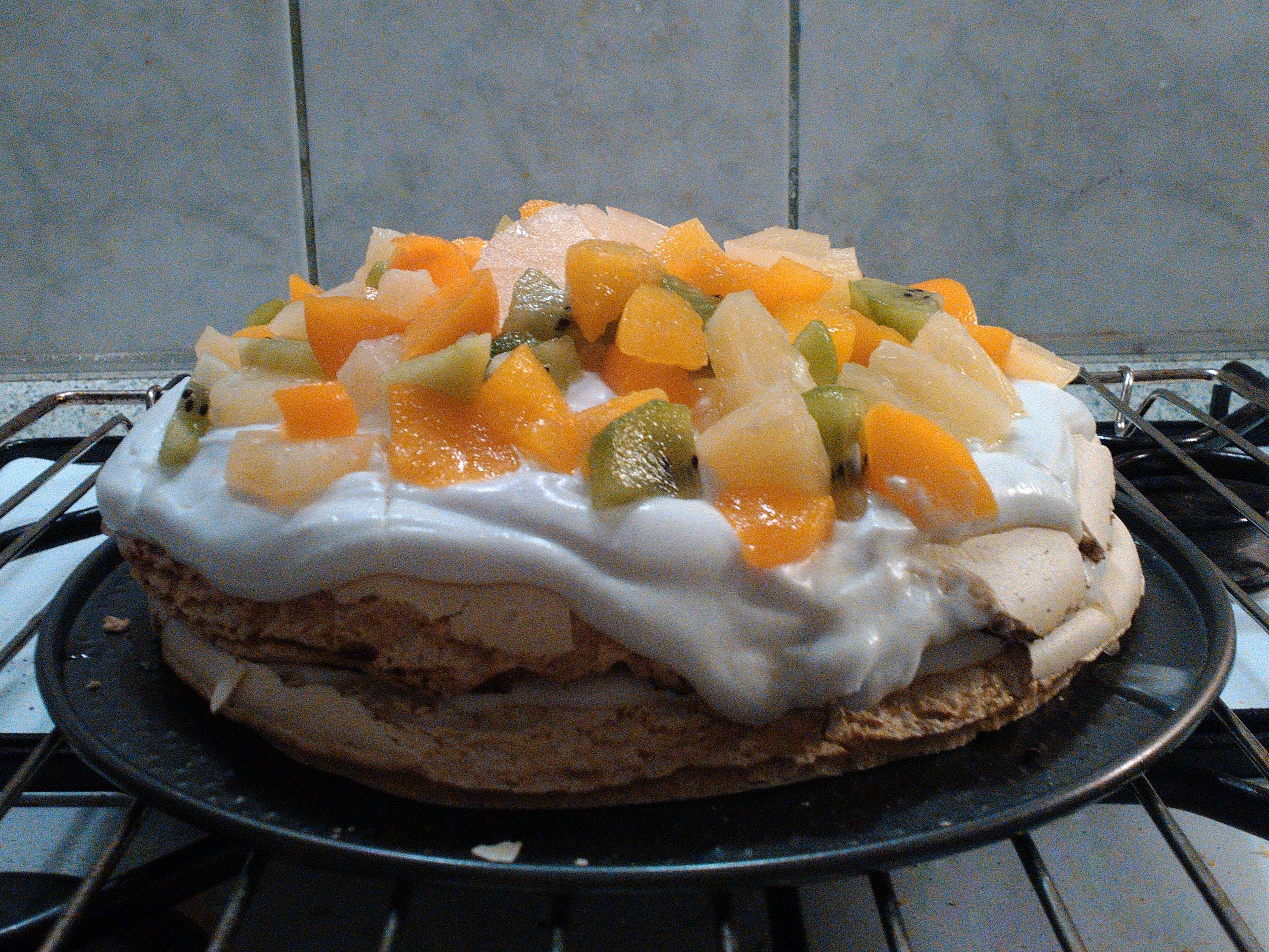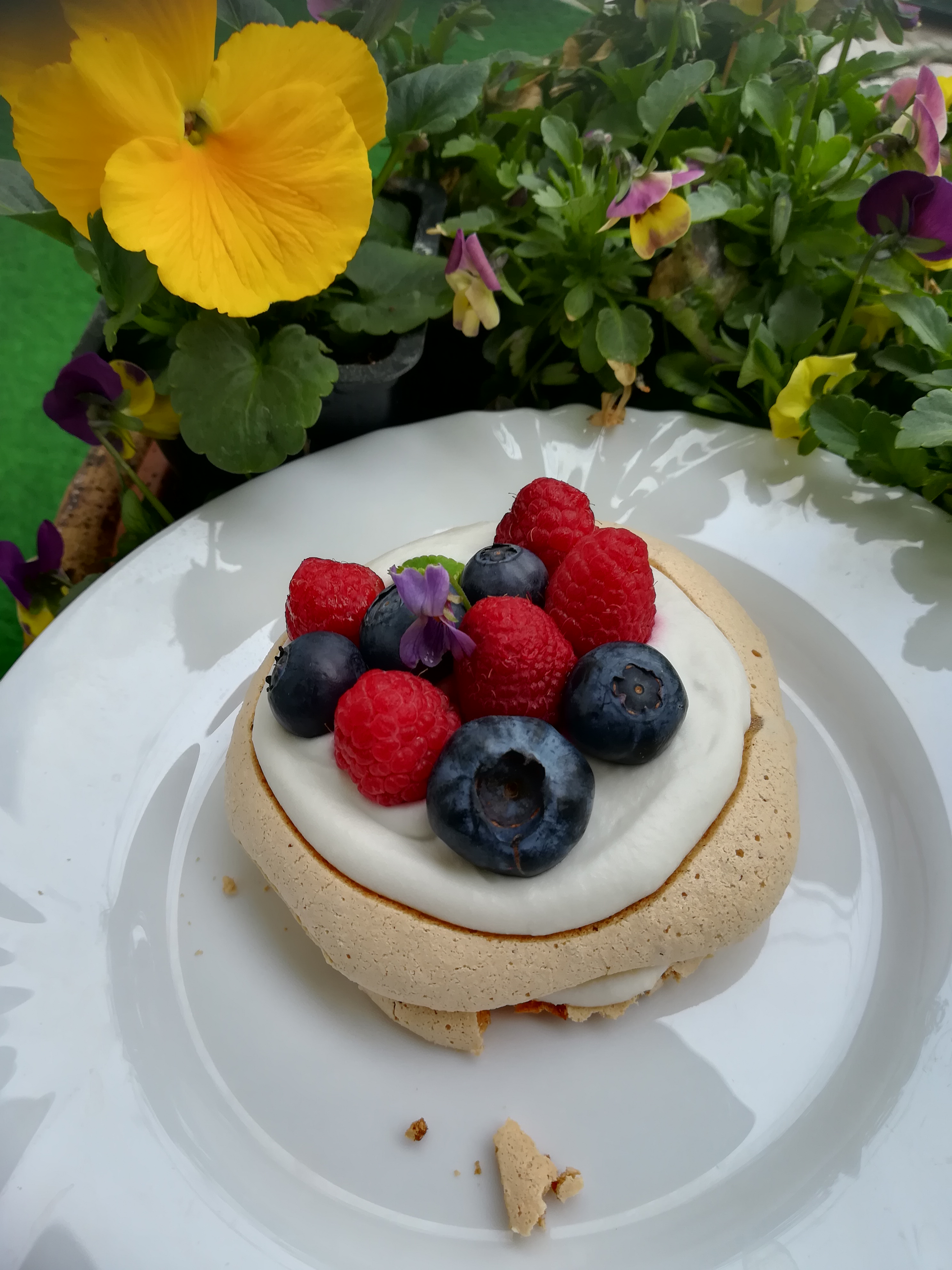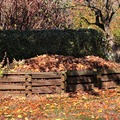This is a text for elementary readers.
When you say Pavlova, you can mean two things. First, the famous Russian ballerina, Anna Pavlova, who toured Australia and New Zealand in the 1920s. Second, the popular dessert, which was named after her. I'm going to tell you about the second one in this post.
My Story
We read about pavlovas with one of my students before Christmas. It was in a text about Christmas celebrations in Australia. At first, we didn't really know what kind of cake it was, so we searched for pictures on the Internet. When we saw the photos, I decided to make a pavlova for my family to try something new and exciting during the winter holidays. As it is summer in Australia at Christmas time, they use fresh fruit to decorate their cakes. However, I didn't want to invest so much, so I used canned fruit.
Here's a photo of my first pavlova cake.

My mother liked it so much that she asked me to make another one for Easter. I really enjoyed decorating it, and it became a real "spring-cake" with a lot of berries and even a flower (a violet) on it.
Here's a photo of my second pavlova dessert.

And now, let's see what we are talking about!
A pavlova is basically a mixture of eggwhites and powdered sugar. You need to whisk them together very carefully, for about 10 minutes. After this, add a little corn flour and white wine vinegar. (If you don't have any of that at home, you can use other kinds of vinegar or even lemon juice.) Finally, just bake it slowly in the oven and you're ready!
After baking, you want to wait until your cake is completely cool. Then, you can fill it with whipped cream and fruits. (I used coconut cream, because I like it a lot better.)
Here's the video I've learnt from:
You can find the link to the recipe in the description under the video.
Now, let's study!
canned fruit - fruit in a metal container which stays good for a long time
whisk - to beat (or hit) a cream very fast with a special tool; you want to get air into the mixture
flour - white powder you use to make bread (for example)
vinegar - a very sour liquid (sour = like lemon)
whipped cream - 1) whipped = "whisked" 2) cream = mik with a lot of fat in it
Now, relax for some minutes!
.
.
.
And now, let's use those words!
Oh no, I put too much ......... into my salad, and now it's too sour.
I want to bake a cake, but there isn't enough ......... at home.
You can use ......... in winter to decorate a fruit cake.
To make a pavlova, you need to ......... the eggwhites first.
You can put ......... on the top of your cappuchino.

